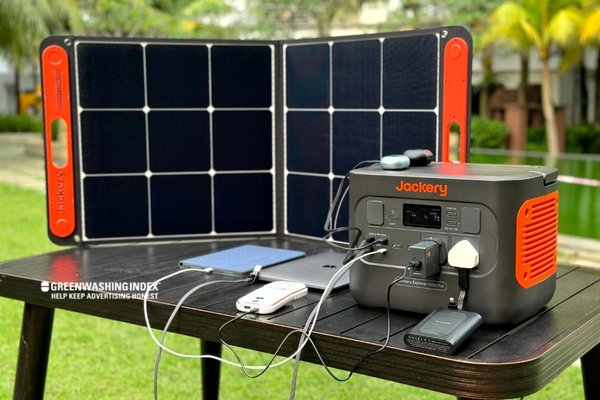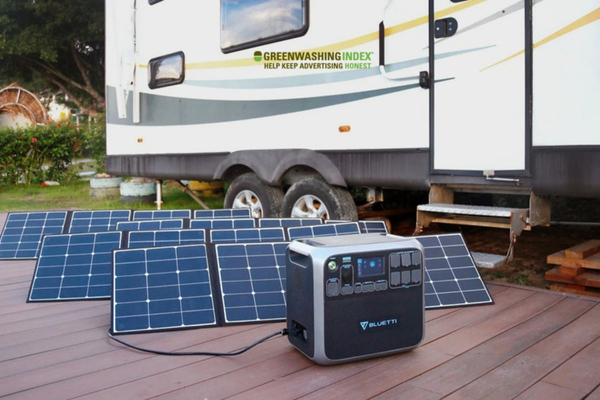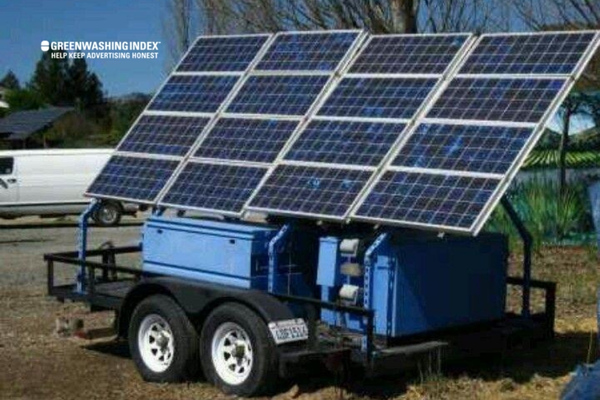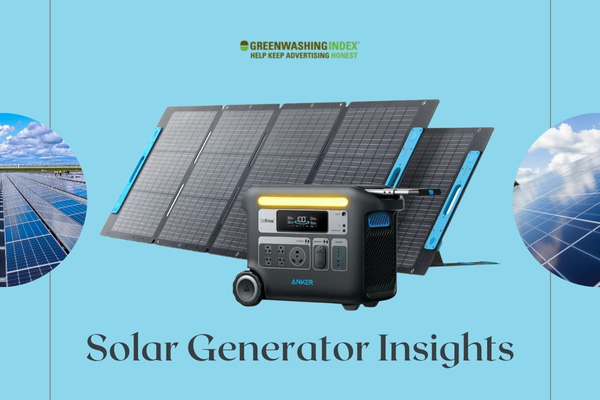Ever wondered if that shining orb in the sky could keep the lights on in your place? I’m talking about how you can harness the sun’s energy with a solar generator, turning it into a reliable home power solution. We’re living in an era where renewable energy systems aren’t just fancy terms tossed around by scientists—they’re real alternatives that could sit in our backyards.
But how effective are they? Can we honestly push aside those hefty utility bills and power our homes using just sunlight? It’s a huge promise, but hey, let’s dig into this bright idea together and see what we find.
When you think of running an entire household, it feels like a big ask for something that just drinks up sunlight all day. Nevertheless, these sleek machines have come a long way. Truth be told, whether or not a solar generator can power your house largely depends on two things: the specs of the generator you’re eyeing and your household’s energy appetite.
We’ll need to have an honest chat about watts and watt-hours—don’t worry, no rocket science here! And then match it all up against what your home consumes on the daily. Some houses may feast too heavily on electricity for basic solar generators to keep up, while others could thrive splendidly off-grid with this sustainable energy source. The key is balancing needs with capabilities.
How Does a Solar Generator Work?
When we talk about greening up our energy game, solar generators often spark interest. These compact yet mighty devices are like treasure chests of clean electricity, letting us harness the power of the sun and convert it into juice for our gadgets and homes. So, let’s pop the hood on these silent powerhouses and really get to know how they work.

Imagine you’ve got this awesome box that turns sunlight into electrical currency you can spend on running your fridge, lights, or TV. The real magicians inside these solar generators making that happen include:
- Solar Panels: These are like big sponges soaking up sunlight. They’re basically collection points where the magic starts.
- Batteries: After the panels do their thing, batteries step in to store this energy for when you actually need it—like a squirrel stashing nuts for winter.
- Inverter: This guy is crucial because most of our home appliances speak AC (Alternating Current), but our solar setup produces DC (Direct Current). The inverter translates between the two languages.
- Charge Controller: Picture this as a wise sage that prevents your batteries from going overboard with charging or discharging—kind of like overseeing battery health.
Together, these components create an eco-friendly team, turning sunshine into something we can plug our TVs into without missing a beat.
How It Harnessed Solar Energy?
Now, let’s dive a bit deeper into how these contraptions snag energy from what’s basically just light:
- Photovoltaic Effect 101: First off, ‘photovoltaic’ is just fancy talk for “light-electricity.” This effect occurs when photons—the little packets of sunlight—strike your solar panel.
- Photons bump into electrons hanging out in atoms of silicon—a material in your solar panel—and set them free.
- But not all electrons make it; they need a push from an electric field inside the panel. Think of it as giving kids slide directions at a park; chaos without guidance!
- Those freed-up electrons start flowing like water down a stream which creates current—a flow we can harness!
- The current then meanders its way to those big old batteries I mentioned before where it gets stored until called upon.
- When it’s showtime (like when you flick on a light), that DC current sashays over to the inverter where it gets all dressed up as AC current.
- Finally ready for prime time, it flows out to power up anything plugged into it—from blenders whipping up smoothies to laptops binge-watching shows.
So there you have it—a peek under what seems like magic but is actually more science fair than Hogwarts! Admittedly less romantic than chanting incantations and waving wands but still pretty darn cool if you ask me.
Capacity of Solar Generators
When we talk about powering our homes with renewable energy systems like solar generators, understanding the capacity or, in simpler terms, the ability to store and supply energy is crucial. Let’s break it down so that anyone can get a grasp of what these technical terms really mean.

Understanding Watts and Watt-Hours
First things first, let me walk you through some basic terminology that’s thrown around when discussing home power solutions like solar generators:
- Watts (W): This is the unit of power. It measures how fast an appliance consumes energy. Think of it as the speed at which your device runs.
- Watt-hours (Wh): Now this one tells us the total amount of energy used over a period. It’s like calculating how long you’ve been running at a certain speed.
Here’s an easy way to picture it:
- Related to power: If a lightbulb is rated at 100 watts, it means it needs 100 watts of power to work.
- In terms of energy capacity: Suppose you leave that lightbulb on for 10 hours; it will consume 1,000 watt-hours (100 watts x 10 hours) of energy.
This distinction is key when considering sustainable energy sources—knowing just how much juice your solar generator will need to keep everything in your home running smoothly.
Average Capacities of Solar Generators
Solar generators come in various sizes and capacities tailored to different needs. Here’s what you’ll typically find on the market:
- Small-Scale Units:
- Capacity: Ranging from about 250 Wh to 1,000 Wh
- Best For: Charging small devices or powering essential lighting
- Mid-Scale Units:
- Capacity: Between roughly 1,000 Wh up to several thousand watt-hours
- Good For: Handling multiple small appliances or a few larger ones
- Large-Scale Units:
- Capacity: Several thousand watt-hours and up
- Suited To: Powering homes in off-grid living situations with careful usage management
To give you an even clearer idea:
- A standard laptop might require about 50 watts.
- A fridge could use anywhere from 100 watts when running efficiently up to more than double that if older or less efficient.
So you see, choosing alternative energy solutions means matching these capacities with how much power all your devices are drawing collectively. That determines whether or not a given solar generator can fully manage your home’s electricity demand without hiccups—it’s all about finding that perfect fit!
Can a Solar Generator Power a House?
When considering alternative energy sources for your home, it’s natural to wonder about the capability of different systems to meet your needs. Solar generators have surfaced as an increasingly popular choice for those seeking sustainable energy sources. Below, we dive into whether a solar generator can indeed become the heart of your home power solutions.
Analyzing Energy Consumption
The first step in evaluating the suitability of a solar generator is understanding how much energy you consume at home. It’s vital to get insight into this before making any decisions on home power solutions:
- Itemized Appliance Checklist: Make a list of all electrical appliances you use and note their respective energy consumption in watts.
- Daily Usage Estimations: For each appliance, estimate how many hours per day it’s used. This will help you calculate daily watt-hour requirements.
- Monthly Energy Sum-Up: Multiply daily usage with days in the month to find monthly consumptions— a figure often already reflected on your electric bill.
- High-Energy Users Highlighted: Identify which appliances are guzzlers — typically heaters, air conditioners, and washers — and contemplate usage adjustments or upgrades to more efficient models.
Let’s take an example with some common household appliance averages:
- Refrigerator: 1–2 kWh/day
- LED light bulb: Around 0.01 kWh per hour
- Television: 0.1 kWh/hour (for LED TVs)
Armed with this kind of detailed breakdown, you’re better placed to understand what size solar generator would be apt for your household.
Matching with A Solar Generator’s Potential
Knowing what energy load a solar generator can manage is crucial when looking at potential matches for your household needs:
- Standard Capacities: Most solar generators come with specifications listed in Watt-hours (Wh) or Kilowatt-hours (kWh), indicating how much electricity they can store and supply.
- Sizing Appropriately: Match the total watt-hours from your consumption analysis with the capacity of various solar generators available in the market.
For instance:
- A small household running just lights, fans, and charging mobile devices might manage well on a smaller capacity unit around 500 Wh – 1 kW.
- An average-sized house with more substantial energy needs such as kitchen appliances might require somewhere upward of ~5 kW.
Here’s where it gets interesting because we begin matching real-life demands against renewable technology capabilities.
Example Scenario:
Your analysis suggests that your basic daily usage sums up to around 10 kWh per day:
- Selecting match: Aim for a solar generator that offers slightly more than your daily requirement — say an option providing about ~12 kWh would provide some leeway regarding sunlight variability and potential usage spikes.
By carefully cross-referencing these figures, I ensure that my off-grid living aspirations aren’t just dream talk; they’re backed by solid numbers that demonstrate feasibility.
So while eyeing those lush catalogs promising robust renewable energy systems has its charm, there’s nothing quite like cold hard data serving as my green thumb compass—it’s empowering knowing I’m one step closer toward establishing my piece of self-sufficient paradise with the right solar power solution for my home!
Advantages and Limitations of Solar Generator
When it comes to embracing renewable energy systems like solar generators for your home power solutions, it’s essential to weigh the pros against the cons. Here’s a breakdown of what I’ve found through my experience and research about going green with solar power for homes.

Advantages:
- Eco-Friendly: A solar generator taps into one of the most sustainable energy sources available – the sun. By using this alternative energy solution, you’re contributing less to pollution since there are no emissions during operation.
- Renewable Source: The sun isn’t going away anytime soon. Every day, that giant ball of fire in the sky shines down on us, providing an inexhaustible source of energy. Taking advantage of this through a solar generator means you’re using a source that replenishes itself daily.
- No Noise Pollution: Solar generators operate silently compared to their gasoline counterparts which can be quite loud. This makes them perfect for residential areas where keeping the peace is key.
- Maintenance Costs: Generators running on fossil fuels often require regular maintenance including oil changes or fuel top-ups. With solar generators, maintenance is minimal — usually just keeping panels clean and ensuring connections remain intact.
- Cost Savings Over Time: After the initial investment in your solar generator system, you can expect significant savings on electricity bills over time as you generate your own power.
- Off-grid Living: For those living off-grid or wanting an emergency backup, a solar generator provides that self-sufficiency without reliance on utility grids.
By incorporating these factors into your decision-making process, it becomes clear why so many people believe in investing in these innovative home power solutions for more sustainable living.
Limitations:
- Weather Dependent: One major downside is that sunlight availability varies — think cloudy days or long winters — affecting how much electricity can be harnessed at times.
- Initial Cost Outlay:
- Installation: There’s no sugarcoating it; setting up can hit your wallet hard initially. The cost includes panels, batteries (to store power), inverters (to convert DC to AC), etc.
- Quality Matters: Skimping on quality to reduce initial costs could lead to inefficiencies and more expense over time.
- Space Requirements:
- Installing enough panels requires significant space — typically rooftops or large yard spaces which may not be available or ideal for every homeowner.
- Energy Storage Limitations:
- Batteries have limited storage capacity; if excessive power gets used overnight or during poor weather conditions, you might fall short unless you have ample battery backup which adds further cost and space concerns.
While there are fantastic advantages associated with using a solar generator as part of your alternative energy solutions toolkit — mainly environmental friendliness and long-term cost savings — potential downsides such as dependence on favorable weather conditions and high upfront costs also need attention before making any solid decision about powering up your house with a solar generator system.
Steps to Power Up Your House with a Solar Generator
When it comes to embracing renewable energy systems for your home, diving into the world of solar generators can be both exciting and daunting. You’re not just buying a piece of equipment; you’re investing in a sustainable future.
The best part? It’s not as intimidating as it may seem. To get started, let’s break down what you need to do to power up your house with a solar generator.
Evaluating Household Requirements
To determine the right home power solutions for your needs, you’ll want to consider these key factors:
- Calculate Your Energy Usage: Start by looking at your electricity bill or using an online energy calculator. Add up the wattage of all the devices and appliances that you expect to run on the generator.
- Refrigerators, lights, TVs, computers, and smaller appliances typically use anywhere from 50-2000 Watts each.
- Power-hungry devices like air conditioners can demand around 1500 Watts or more.
- Consider Peak Power Needs: Remember that some appliances like microwaves or blenders have higher startup power than their running power.
- Plan for Continuous and Intermittent Use: Distinguish between what runs 24/7 (like a fridge) versus items used occasionally (like a vacuum cleaner).
- Assess Backup Duration: Decide how long you want your system to run without sunlight—just during an outage or potentially for days.
By following this bulletproof method — listing all your electrical needs item by item —you’ll have clarity on the total amount of power needed from your solar generator. This step is crucial because underestimating could leave you in the dark while overestimating could lead to unnecessary expenses.
Choosing The Right Model
With a clear picture of your requirements in hand, thrill yourself by shopping around for that perfect match:
- Check Capacity Ratings: Look at both wattage and watt-hour ratings.
- Generators typically range from small units (~250 Wh) intended for minor gadgets up to large ones (~2000 Wh+) fit for entire RVs or off-grid cabins.
- Spot models promising enough juice for your specific household usage profile.
- Analyze Build Quality: Durability matters—especially if it’s going outdoors or being moved around frequently.
- Review Expandability: Some models allow extra battery packs; others don’t. Think long-term flexibility!
- Investigate if the model offers expansion possibilities through additional solar panels or batteries.
- Consider things like:
- Size and Weight: Make sure it aligns with any space constraints and portability needs.
- Charge Time: How quickly does it regenerate juice under ideal conditions?
- AC vs DC Output: Not all generators provide standard AC outlets—make sure yours does if needed!
Reflect on budget constraints but remember high upfront costs may pay off through reliability & efficiency gains over time.
Making these well-informed decisions is akin to piecing together a puzzle designed exclusively for your lifestyle. Armed with knowledge about wattage demands & market options – alongside personal preferences – ensures no aspect is overlooked when selecting the right alternative energy solutions tailor-made just for you!
FAQs
Can I run my air conditioning on a solar-powered generator?
Absolutely, you can run your air conditioner using a solar generator; however, keep in mind that A/C units typically require significant power, so ensure your generator has adequate capacity.
What are the maintenance costs for hosting home-based power via my “solar generator”?
The good news is that solar generators generally have low maintenance costs. They mainly need periodic cleaning of the panels and checking connections, along with battery replacements every few years.
Is it feasible to completely switch over to solar power for my house?
Yes, it’s feasible but depends on various factors like your home’s energy demands and the size of the solar generator system you install. You might still need grid support unless you invest heavily in a large-scale system.
How is a solar generator’s capacity measured?
A solar generator’s capacity is typically measured in watt-hours (Wh) or kilowatt-hours (kWh), which signifies how much electricity the unit can store and provide over a certain period.
Conclusion
In navigating the intricacies of renewable energy systems, I’ve peeled back the layers on whether a solar generator can indeed be the heart of home power solutions. From understanding how solar generators work to gauging their capacity vis-à-vis household consumption, the journey’s been enlightening.
It’s clear that while solar generators hold promise for off-grid living and sustainable energy sources, they also present particular challenges. Bridging the gap between innovative green technology and practical application requires careful consideration of both advantages and limitations.
Key Takeaway Points
- A solar generator can provide energy for home use if matched with appropriate capacity.
- The usability hinges on understanding wattage and consumption needs.
- Benefits include environmental friendliness and renewable energy sourcing.
- Consider weather dependence and investment costs when switching to solar power for homes.



